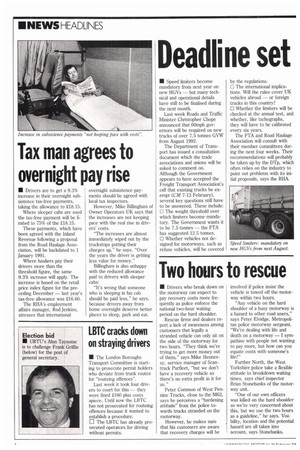Two hours to rescue
Page 6

If you've noticed an error in this article please click here to report it so we can fix it.
• Drivers who break down on the motorway can expect to pay recovery costs more frequently as police enforce the national two-hour waiting period on the hard shoulder.
Rescue firms and dealers report a lack of awareness among customers that legally a stranded vehicle can only sit on the side of the motorway for two hours. "They think we're trying to get more money out of them," says Mike Hennessy, service manager of Scantruck Purfleet, "but we don't have a recovery vehicle so there's no extra profit in it for us."
Peter Common of West Pennine Trucks, close to the M62, says he perceives a "hardening attitude" from the police towards trucks stranded on the motorway.
However, he makes sure that his customers are aware that recovery charges will be involved if police insist the vehicle is towed off the motorway within two hours.
"Any vehicle on the hard shoulder of a busy motorway is a hazard to other road users," says Peter Elvidge, Metropolitan police motorway sergeant. "We're dealing with life and death on a motorway — I sympathise with people not wanting to pay more, but how can you equate costs with someone's life?"
Further North, the West Yorkshire police take a flexible attitude to breakdown waiting times, says chief inspector Brian Stonebanks of the motorway unit.
"One of our own officers was killed on the hard shoulder so we're very concerned about this, but we use the two hours as a guideline," he says. Visibility, location and the potential hazard are all taken into account, says Stonebanks.








































































































